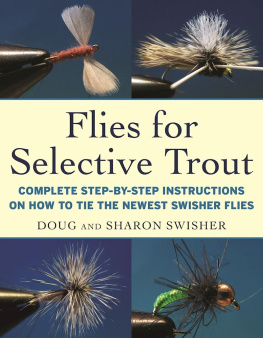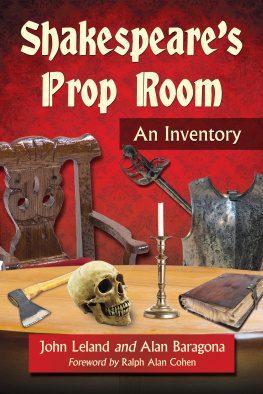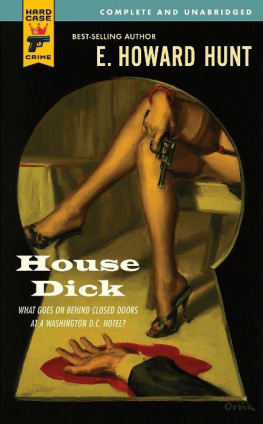L. O. HOWARD,
Chief of the Bureau of Entomology.
USDA Logo
WASHINGTON:
GOVERNMENT PRINTING OFFICE.
1911.
LETTER OF TRANSMITTAL
U. S. Department of Agriculture ,
Bureau of Entomology ,
Washington, D. C, May 23, 1911.
Sir : I have the honor to transmit for publication a paper dealing with the subject of the house fly or typhoid fly. Previous publications of this department concerning this insect have been in circular form, but it is desired to make this information more widely available through the medium of a Farmers' Bulletin. With this intention this manuscript has been prepared, being modified and amplified from Circular No. 71 of this bureau, and I respectfully recommend its publication as a Farmers' Bulletin.
Respectfully,
L. O. Howard ,
Entomologist and Chief of Bureau.
Hon. James Wilson ,
Secretary of Agriculture.
[A list giving the titles of all Farmers' Bulletins available for distribution will be sent free upon application to a Member of Congress or the Secretary of Agriculture.]
CONTENTS.
| Page. |
| Introduction |
| Life history of the true house fly |
| Carriage of disease |
| Remedies and preventives |
| Natural enemies |
| What cities and towns can do |
ILLUSTRATIONS.
| Page. |
| 1. | The common house fly (Musca domestica); Puparium, adult, larva, and details |
| 2. | The biting house fly (Stomoxys calcitrans): Adult, larva, puparium, and details |
| 3. | A stable fly (Muscina stabulans): Adult, larva, and details |
| 4. | One of the blue-bottle flies (Phormia terrnov): Adult |
| 5. | The green-bottle fly (Lucilia csar): Adult |
| 6. | The little house fly (Homalomyia brevis): Adults and larva |
| 7. | The fruit fly (Drosophila ampelophila): Adult, larva, puparium, and details |
| 8. | The dung fly (Sepsis violacea): Adult, puparium, and details |
| 9. | The house centipede (Scutigera forceps): Adult |
HOUSE FLIES.
INTRODUCTION.
There are several species of flies which are commonly found in houses, although but one of these should be called the house fly proper. This is the Musca domestica L. (), which is called the stable fly, and which, while closely resembling the house fly (so closely, in fact, as to deceive anyone but an entomologist), differs from it in the important particular that its mouth parts are formed for piercing the skin. It is perhaps second in point of abundance to the house fly in most portions of the Northeastern States. It breeds in horse manure, cow manure, and in warm decaying vegetation like old straw and grass heaps.
Fig. 1. The common house fly (Musca domestica): Puparium at left; adult next; larva and enlarged parts at right. All enlarged. (Authors Illustration.)
A third species, commonly called the cluster fly (Pollenia rudis Fab.), is a very frequent visitant of houses, particularly in the spring and fall. This fly is somewhat larger than the house fly, with a dark-colored, smooth abdomen and a sprinkling of yellowish hairs. It is not so active as the house fly and, particularly in the fall, is very sluggish. At such times it may be picked up readily and is very subject to the attacks of a fungous disease which causes it to die upon window panes, surrounded by a whitish efflorescence. Occasionally this fly occurs in houses in such numbers as to cause great annoyance, but such occurrences are comparatively rare. It is said in its earlier stages to be parasitic on certain angleworms.
A fourth species is another stable fly, known as Muscina stabulans Fall. (), a form which almost exactly resembles the house fly in general appearance, and which does not bite as does the biting stable fly. It breeds in decaying vegetable matter and in excrement.
Fig. 2. The stable fly or biting house fly (Stomoxys calcitrans): Adult, larva, puparium, and details. All enlarged. (Authors illustration.)
Several species of metallic greenish or bluish flies are also occasionally found in houses, the most abundant of which is the so-called blue-bottle fly (Calliphora erythrocephala Meig.). This insect is also called the blow-fly or meat-fly and breeds in decaying animal material. A smaller species, which may be called the small blue-bottle fly, is Phormia terrnov Desv. ().
There is still another species, smaller than any of those so far mentioned, which is known to entomologists as Homalomyia canicularis L., sometimes called the small house fly. A related species, H. brevis Rond., is shown in . H. canicularis is distinguished from the ordinary house fly by its paler and more pointed body and conical shape. The male, which is much commoner than 'the female, has large pale patches at the base of the abdomen, which are translucent when the fly is seen on a window pane. It is this species that is largely responsible for the prevalent idea that flies grow after gaining wings. Most people think that these little Homalomyias are the young of the larger flies, which, of course, is distinctly not the case. They breed in decaying vegetable material, in the excreta of animals, and in dead insects.
Still another fly, and this one is still smaller, is a jet-black species known as the window fly (Scenopinus fenestralis L.), which in fact has become more abundant of later years. Its larva is a white, very slender, almost thread-like creature, and is found in cracks of the floor in buildings, where it feeds on other small insects.
In the autumn, when fruit appears on the sideboard, many specimens of a small fruit-fly (Drosophila ampelophila Loew) () make their appearance, attracted by the odor of overripe fruit.
A small, slender fly is not infrequently seen in houses, especially upon window panes. This is Sepsis violacea Meig., shown enlarged in .
Fig. 3. A stable fly (Muscina stabulans): Adult, larva, and details. All enlarged. (Authors Illustration.)
All of these species, however, are greatly dwarfed in numbers by the common house fly. In 1900 the writer made collections of the flies in dining rooms in different parts of the country, and out of a total of 23,087 flies 22,808 were Musca domesticathat is, 98.8 per cent of the whole number captured. The remainder, consisting of 1.2 per cent of the whole, comprised various species, including those mentioned above.
LIFE HISTORY OF THE TRUE HOUSE FLY.
Musca domestica commonly lays its eggs upon horse manure. This substance seems to be its favorite larval food. It will oviposit on cow manure, but we have not been able to rear it in this substance. It will also breed in human excrement, and from this habit it becomes very dangerous to the health of human beings, carrying, as it does, the germs of intestinal diseases such as typhoid fever and cholera from excreta to food supplies. It will also lay its eggs upon other decaying vegetable and animal material, but of the flies that infest dwelling houses, both in cities and on farms, a vast proportion comes from horse manure.









